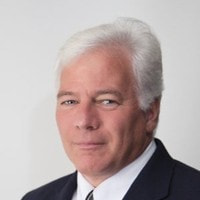The California collision deductible waiver (CDW) is coverage that waives your collision deductible if a negligent uninsured motorist hits you.
According to the Insurance Information Institute, 16.6% of California drivers are uninsured making California 10th in the nation for uninsured drivers as of 2019 data — the most recent available.
In California, UMPD is only available if you don’t have collision coverage, according to Progressive. If your insurer offers collision damage waivers, you typically must choose between carrying either a CDW or UMPD coverage.
The CDW option with a personal auto insurance policy in California doesn’t charge the collision deductible when an uninsured or hit-and-run motorist, who is at fault, damages your vehicle. Coverage typically applies only when:
- There is actual physical contact
- You can identify the uninsured driver or vehicle
What are California’s uninsured motorist coverage requirements?
California car insurance law requires that non-commercial vehicle policies that provide bodily injury liability coverage for uninsured motorists must offer coverage for damage to the insured motor vehicle. The coverage must be up to the extent that you’re legally entitled to recover from the owner or operator of the uninsured motor vehicle and caused by an uninsured motor vehicle that either:
- Pays the collision deductible on the insured motor vehicle when you have collision coverage. (Waiver of collision deductible)
- Pays for the damage to the insured motor vehicle when you don’t have collision coverage. (Uninsured motorist property damage coverage)
Payment shall not include damage to personal property or loss of use of a motor vehicle and shall not exceed the smaller of any of the following:
- The amount of the collision deductible
- The actual cash value of the insured motor vehicle
- $3,500
When does UMPD coverage apply?
California insurers offer uninsured motorist property damage (UMPD) coverage. However, if you decide not to buy this coverage, you can be offered the collision damage waiver. Thus, if you don’t carry collision coverage on your auto, UMPD will pay up to $3,500 (not to exceed the value of the vehicle) for damages stemming from a person who’s at fault in the accident and is uninsured.
But you can only get UMPD if you don’t have collision coverage.
If you carry collision insurance coverage on your vehicle, you can purchase a collision deductible waiver in California. If you’re involved in an accident with an uninsured vehicle with CDW as part of your policy, your insurer will pay your collision coverage deductible for you.
What does uninsured motorist property damage coverage in California cover?
Uninsured motorist property damage coverage normally pays for damages sustained by your covered vehicle when involved in an accident with an uninsured motorist. Usually, the following conditions must be met before uninsured motorist property damage coverage applies:
- The other party must be uninsured.
- The driver of the other vehicle must be legally responsible for your damages.
- Direct physical contact must occur between your vehicle and the uninsured vehicle.
- You must be able to provide the insurance company positive identification of the uninsured party (pocket license number, license plate number of the other vehicle). If this involves a hit-and-run and you can’t get the uninsured party’s information, coverage won’t apply.
- You must report the loss to the insurance company within 10 days of the accident.
The insurance company’s liability to you will be limited to the following:
- For vehicles with collision coverage, the most the insurance company will pay under this coverage (CDW) is your collision deductible.
- For vehicles without collision coverage, the most the insurance company will pay under this coverage (UMPD) is $3,500 or the actual cash value of the vehicle (whichever is less).
There are also cases when the CDW doesn’t apply. Here are a few of those instances:
- You’re at fault
- You’re partly at fault
- The accident is a hit-and-run, and you can’t identify the driver or vehicle
The collision deductible waiver can help you in specific cases, but it’s not something that happens that often. CDW protection doesn’t cost much. You have to decide whether it’s worth it.
One way to add CDW protection without hitting your wallet is to raise your overall auto insurance deductible. If you decide to increase your deductible, make sure you have enough money set aside if you need to pay the deductible for an auto insurance claim. The last thing you want is not to be able to pay the deductible after a crash.
— Michelle Megna contributed to this story.
Sources
- Insurance Information Institute. “Facts + Statistics: Uninsured motorists.” Accessed January 2023.
- Progressive. “What is a collision deductible waiver?” Accessed January 2023.



